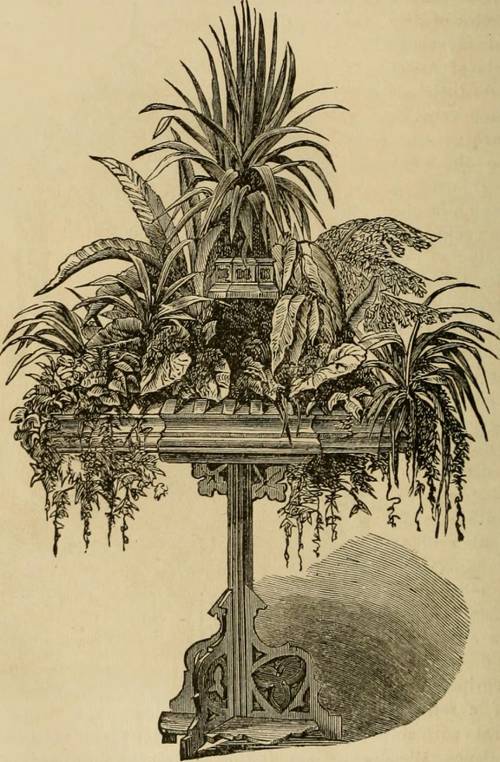
FAQ About Indoor Plant Air Temperature Regulation

Why is air temperature regulation important for indoor plants?
Air temperature regulation is crucial for indoor plants because it directly affects their growth and health. Plants have optimal temperature ranges that support physiological processes such as photosynthesis and respiration. Deviations from these temperatures can inhibit growth, cause stress, or even damage the plant.

What is the ideal temperature range for most indoor plants?
The ideal temperature range for most indoor plants is typically between 65°F and 75°F (18°C to 24°C) during the day, and around 55°F to 65°F (13°C to 18°C) at night. However, some tropical plants may prefer slightly warmer conditions.

How can I measure the air temperature around my indoor plants?
To measure the air temperature around indoor plants, you can use a digital thermometer or a hygrometer, which often includes a temperature measurement feature. Position the device near the plants for an accurate reading.

What are common devices used for regulating indoor air temperature?
Common devices for regulating indoor air temperature include thermostats, space heaters, and air conditioners. Humidifiers and dehumidifiers may also be used to maintain the proper humidity level, which can indirectly affect temperature perception.

How does air conditioning affect indoor plants?
Air conditioning can lower the air temperature for indoor plants, which is beneficial in hot climates. However, it also reduces humidity, so it's important to monitor moisture levels and potentially use a humidifier to maintain optimal humidity for plant health.

Can sudden temperature changes harm indoor plants?
Yes, sudden temperature changes can stress or harm indoor plants, leading to issues such as leaf drop, reduced growth, or even plant death. It's advisable to introduce temperature changes gradually to prevent shock.

How do heaters impact indoor plant environments?
Heaters can raise the temperature for indoor plants, which is beneficial in colder climates. However, they can also dry out the air, so using a humidity tray or a room humidifier can help keep humidity levels balanced.

What role does humidity play in temperature regulation for indoor plants?
Humidity is a crucial factor in temperature regulation because it affects transpiration—the process through which plants lose water. Proper humidity helps maintain plant health by ensuring efficient water and nutrient transport. Adjusting humidity in conjunction with temperature creates a balanced environment.

Is it necessary to adjust temperature settings at night for indoor plants?
Yes, it can be beneficial to adjust temperature settings at night, as many indoor plants prefer cooler temperatures during this time. This mimics their natural environment and can improve growth and overall health.

How do I protect my indoor plants from temperature extremes?
To protect indoor plants from temperature extremes, ensure they are not placed near drafty windows, air vents, or radiators. Consider using insulating materials like curtains to block external temperature fluctuations and ensure consistent care routines to promote resilience.

What are some signs that an indoor plant is too cold?
Signs that an indoor plant is too cold include wilting, leaf curling, or browning at the edges. In some cases, cold temperatures may lead to stunted growth or even halt it altogether. Assess the environment and adjust as necessary to restore proper conditions.

What are some signs that an indoor plant is too hot?
Signs that an indoor plant is too hot include wilting, leaf scorch or browning, and a droopy or limp appearance. Plants may also shed leaves if they are exposed to excessive heat for prolonged periods.

How can I create a balanced environment for my indoor plants?
To create a balanced environment, monitor both temperature and humidity regularly, and use devices like thermometers and humidifiers as needed. Arrange plants in optimal locations away from direct heat or cold sources, and adjust environmental settings seasonally.

Do different types of indoor plants require different temperature settings?
Yes, different types of indoor plants may have specific temperature preferences. For instance, tropical plants typically prefer warmer, more humid conditions, while succulent plants thrive in drier, slightly cooler environments. Understanding your plant's native habitat can guide adjustments.

How can I ensure consistent temperature for indoor plants during winter?
Ensure consistent temperature in winter by sealing drafts, using thermal curtains, and maintaining a balanced heating system in your home. Placing plants on insulating trays or using small heaters focused on problem areas can help minimize temperature fluctuations.

How does the location within a room affect plant temperature regulation?
The location within a room can significantly impact temperature regulation for plants. Placing plants near windows might expose them to cold drafts or intense sunlight, while proximity to vents can introduce inconsistent heating. Choosing locations with stable temperatures helps maintain optimal growing conditions.

Should I move my indoor plants outdoors for temperature regulation?
Moving indoor plants outdoors for temperature regulation can be beneficial if the outdoor conditions match their needs. However, fluctuations in weather and potential exposure to pests and diseases should be considered, and transitions should be gradual to avoid stress.

Can lighting affect the air temperature around indoor plants?
Yes, lighting, especially from incandescent or high-intensity LED lights, can increase the air temperature around indoor plants. Understanding the impact of your specific light setup is essential for maintaining the desired environmental conditions.

What are practical tips for adjusting indoor temperatures based on plant type?
To adjust indoor temperatures based on plant type, research the preferred climate conditions of each plant species. Use adjustable thermostats, fans, or heaters to fine-tune areas, and group plants with similar needs to streamline temperature regulation.

Are there any smart home devices that help with indoor plant temperature regulation?
Yes, smart home devices such as smart thermostats, hygrometers, and integrated climate control systems can automate and optimize temperature regulation for indoor plants. These devices often allow remote monitoring and adjustments via smartphone apps, providing convenience and precision.
